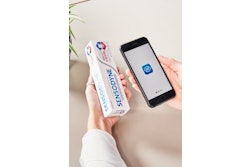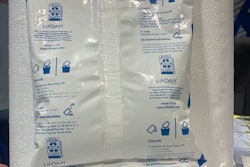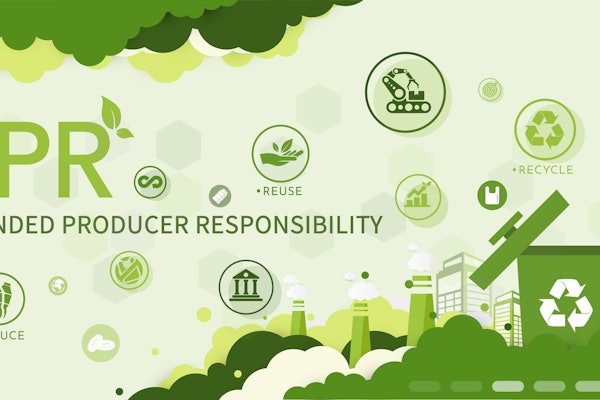Aluminum foil is a critical packaging material for pharmaceuticals, medical devices, foods, personal care, consumer goods, and more, providing needed barrier protection from oxygen, light, moisture, and bacteria.
Unfortunately, U.S. converters are now facing extreme tariffs on light-gauge foil used for packaging medical devices, diagnostics, and pharmaceuticals, which are poised to impact costs and lead times. One of the most distressing components of the tariffs is the threat of retroactive price increases for foil already sold and consumed in 2021 and 2022.
What happened?
In 2018, the United States Department of Commerce (DOC) imposed duties on imports of Chinese aluminum. While the goal was to make U.S.-manufactured foil more competitive, domestic supply has only decreased since this regulatory action.
One foil mill shut down their converter-grade aluminum foil operations in January 2020. With no domestic sources for thin-gauge aluminum foil (< 0.001”) or for wide web aluminum foil available, U.S. manufacturers moved from China-sourced aluminum foil to aluminum foil from other countries, including the Republic of Korea and Thailand.
As FPA president and CEO Alison Keane stated to the House Ways and Means Committee in June 2020, “At a time when sterile packaging for food, health and hygiene, and medical equipment is more important than ever, and as U.S. manufacturers are suffering from the worst economy in decades, the Administration should be looking at ways to alleviate supply chain burdens, not increase them.”
Then in July 2022, the DOC announced a self-initiated investigation of aluminum foil duties targeting light gauge foil that has been processed to final gauge in Korea and Thailand. The DOC’s concern is that companies are engaging in circumvention of the tariffs because both countries may be importing inputs (base metal and foil stock) from China.
What’s next?
On December 15, 2022, the DOC is scheduled to announce its preliminary determination. [Update as of December 16: the preliminary determination has been postponed until February 28, 2023. -KS]
If they determine circumvention did take place, they may announce duty rates, with payments being collected a mere 10 days later on Christmas Day. This may include retroactive duties for product imported as far back as Nov. 4, 2021.
On May 14, 2023, the DOC will issue a final determination at which point rates may be further adjusted. [Update as of December 16: the final determination has been postponed until July 18. -KS]
The Flexible Packaging Association (FPA) is coordinating lobbying efforts around this investigation, in parallel with individual supplier and end user lobbying efforts. We sat down with PAXXUS’ Chief Strategy Officer Dwane Hahn to discuss this time-sensitive issue, the implications of the DOC’s upcoming decision, and the need for packaging suppliers and end users to make their voices heard.
Keren Sookne (KS): How has the market changed since the U.S. imposed these duties on Chinese aluminum foil imports? Let’s talk about global thin-gauge foil sources that do not use inputs from China.
Dwane Hahn (DH): To be specific, there are no U.S. suppliers of thin-gauge foil, so we do not have the option to source from the U.S. even if we wanted to, even at five or 10 times the price.
Back in 2018, when the China tariffs were implemented, every company in the U.S. tried to move to acquire their foil needs outside of China. This caused a ripple effect that pushed lead times out and drove up pricing—basic supply and demand economics—because China was obviously a significant supplier of aluminum foil to many U.S. converters like PAXXUS.
Fast forward to July of this year, when the DOC entered into a self-initiated circumvention investigation—they became concerned over the source of foil sourced from South Korea and Thailand. If these tariffs are deployed to these two countries, that would mean that the supply chain is going to be even further constrained. There is not enough capacity in the world to accommodate what people are buying from Thailand and South Korea.
Converter lead times are going to increase dramatically, along with prices. We're already seeing that impact in the price of foil, which is broken up into two things: raw aluminum ingots and the manufacturing of the aluminum foil itself, rolling it back and forth to thin it out. That price has gone up significantly.
KS: Can you elaborate on the financial impacts to manufacturers who rely on thin-gauge aluminum foil for their packaging?
DH: The financial impact is severe. If they’re passed, the duty rates will be dependent upon the source and currently range from 78.03% to 124.36% of import value. The People's Republic of China (PRC)-wide rate is 108.43%.
The thicker the foil, the higher the percentage increase. It ranges depending on the final lamination from 20% up to a 45% increase for 2 mil foil laminates.
KS: Beyond the financial issue, is there potential for a public health crisis because companies can't get the materials they need for medical devices in time?
DH: Yes, it’s causing a lot of fear. There is the potential to cause a medical device supply crisis, which is definitely not what any of us want.
KS: This is largely speculative, but is there any chance that the lack of domestic foil sources will play into the DOC’s action?
DH: It’s a good question, and it’s hard to answer. The origin of the tariffs back to 2018 was to try and drive investment into the U.S. aluminum foil market. It just didn't happen to work.
If you’re familiar with this issue, and the way it's written right now, the action is essentially driving manufacturing away from the U.S. MDMs may decide they’d rather purchase fully laminated foil from countries without tariffs, instead of from local U.S. converters. That would be driving manufacturing and business away from the U.S. While the DOC action was definitely well-intentioned, the potential impacts are the inverse of the real objective.
The DOC wants to have aluminum foil manufacturing in this country, which is awesome, and we agree. And over the last year, our customers have been extremely focused on what we’re doing to reshore or manufacture materials close to their plants. Everyone wants to de-risk their supply chains. This is why I understand what the DOC is doing—we’re all trying to do the same thing. But we should go about it a little differently.
KS: This policy action will obviously impact end users—medical device manufacturers (MDMs) and pharma manufacturers—if the duties are imposed. What’s been the reception when you explain this to your customers?
DH: I can't tell you how many calls I’ve had to explain the situation to the high-level folks at our customers. At first, they may not understand how it affects them. Then I explain what it means to us: “We're not drawing a line in the sand. We're digging a trench, and we're digging in, because our existence depends on how we manage this.”
Imagine your cost of goods sold as an organization goes up by 50% on December 15, and you potentially owe the government all that money on Christmas Day, 10 days after the determination. And it could be retroactive for a year. How do you deal with that? What if your house payments or rent went up by 50%, retroactive for a year, and it's due in 10 days? It’s a really serious issue.
KS: So what are packaging suppliers doing in response? What’s your desired outcome?
DH: At PAXXUS, we have filed a separate brief with the DOC, and Dhuanne Dodrill, our CEO, is actively meeting with offices of Illinois senators. We’re participating in lobbying efforts on The Hill, with priority placed on demonstrating the impact on medical device packaging. The Flexible Packaging Association (FPA) has also organized lobbying efforts among suppliers to educate legislators on the impact of these potential duties. [Get involved by contacting FPA President and CEO Alison Keane at [email protected]. —KS]
The real ask of the DOC is to just stop the action altogether.
If the DOC does determine circumvention occurred, a delay on the tariffs for some period of time would the next best outcome. If we have time, we could work with our customers to manage this. It's this retroactive piece that's the scariest. We're hiring people to manage this because there are so many moving pieces and it’s very complicated. For example, the Department of Commerce could come back and say, "For Mill A in Thailand, the duty goes back to July at 100%. For Mill B, it goes back to November at 80%. For South Korea, Mill C goes back to August at 82.1%.”
We know that lobbying has worked in the past. There was a circumvention investigation in the solar industry, and it was found in the affirmative, meaning the DOC said that yes, tariffs do apply. However, the industry was successful in lobbying, and the tariffs were deferred for two years, and no retroactive tariffs or duties were applied.
KS: Is there anything MDMs and pharma manufacturers can do at this point?
DH: Definitely. We're asking our customers to get involved and lobby on The Hill. Heavyweight companies have government affairs teams, and many are already hard at work with lobbying efforts.
Only Interested Parties (i.e., importers of record) were able to submit a formal response to the DOC itself, but any company can go to The Hill and lobby their representative. [See sidebar below for tips. —KS] We're asking manufacturers to approach their senators and house representatives and demonstrate the implications of this action on the market, so the elected officials can then go to the DOC.
There are also efforts among policy organizations that represent some of our customers. That’s another route for manufacturers to go, especially if they’re smaller and don’t have the time and resources for their own government affairs teams. There’s strength in numbers.
In general, for all manufacturers, the goal is to be loud and to make your voice heard in whatever vehicle you have.
KS: I know many in the industry are extremely worried about the outcome. What’s giving you hope?
DH: Fortunately, it's been somewhat heartwarming. Many of the conversations with our customers, once they understand the exact situation, it goes from not understanding to “what can we do to help you? This isn't acceptable.”
In the beginning, I think some of us felt like we were on an island, dealing with this alone, and not sure what was going to happen. But the industry is banding together.
It's still a really bad issue. Ultimately, it will be passed to the consumer if the tariffs are passed. It’s a bad policy and a major challenge, but the industry is united up and down the supply chain on trying to minimize the risk to everyone.























